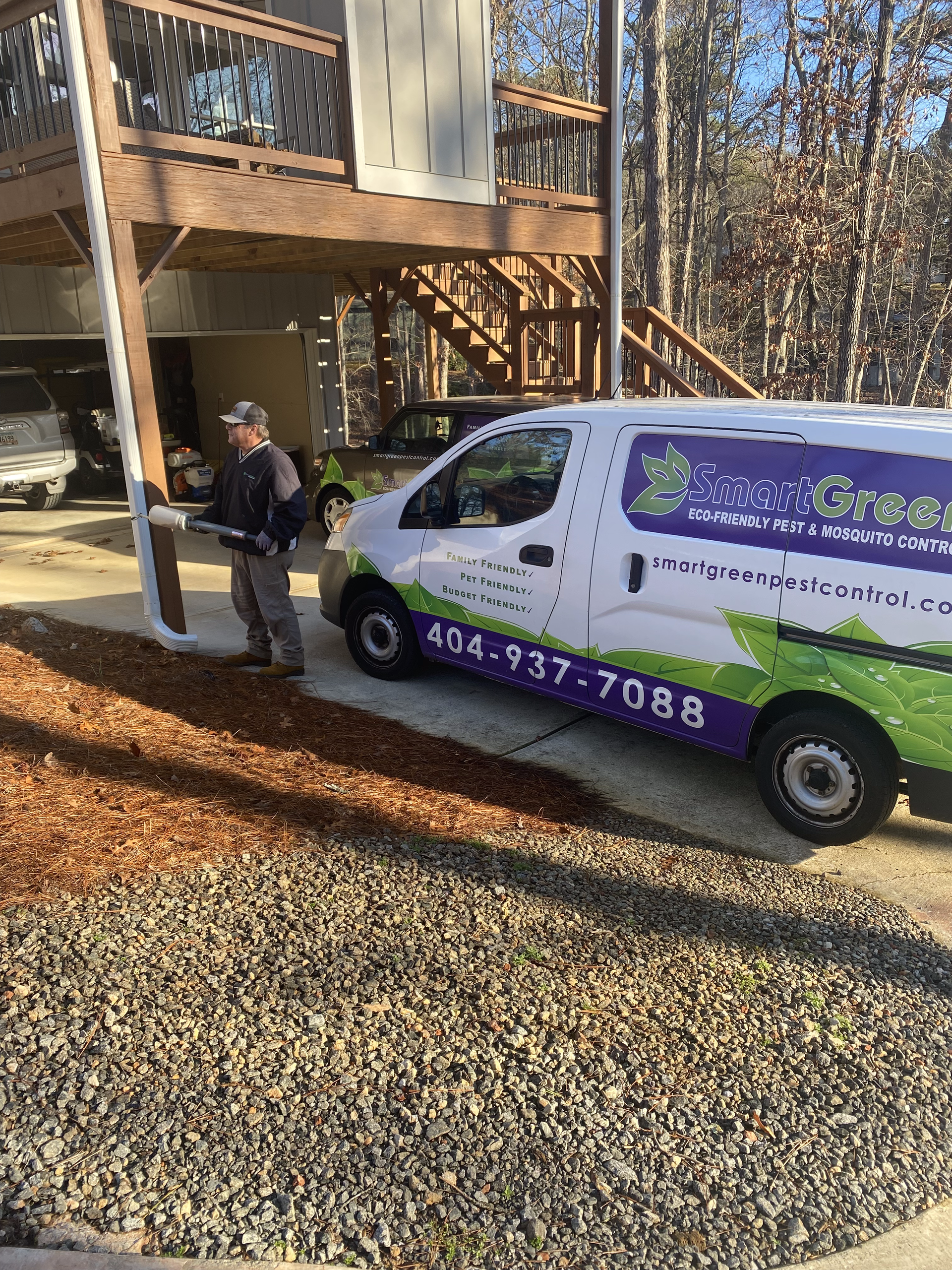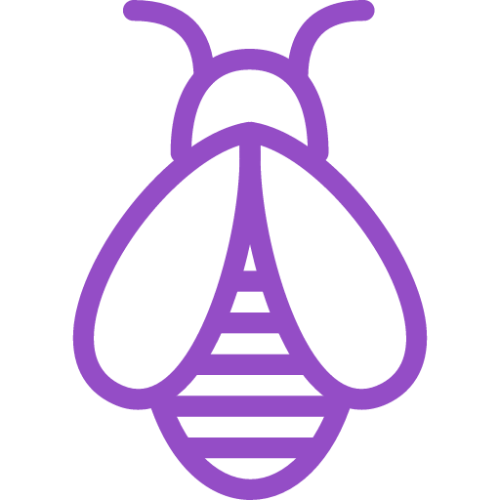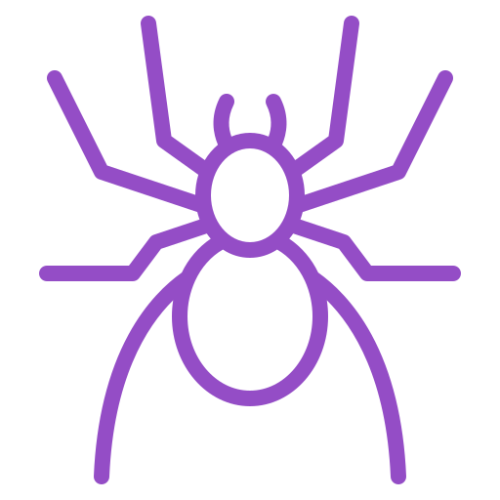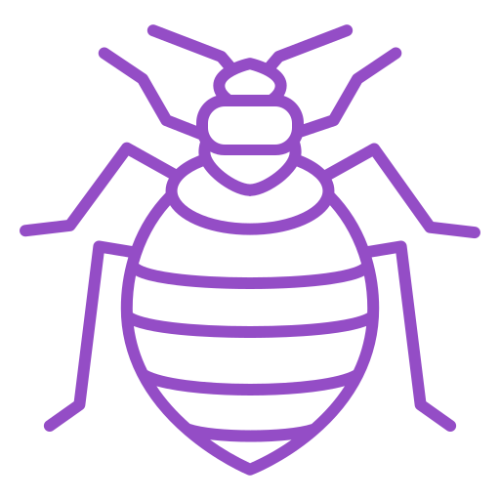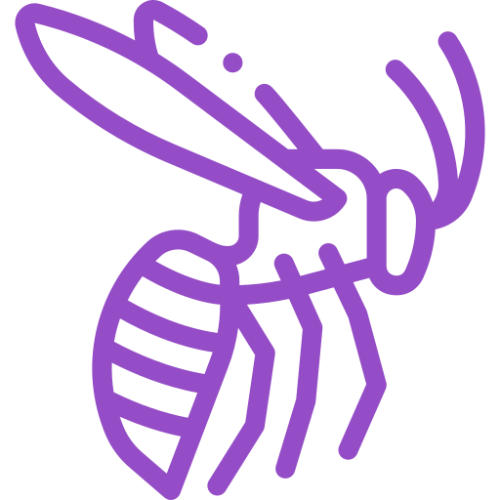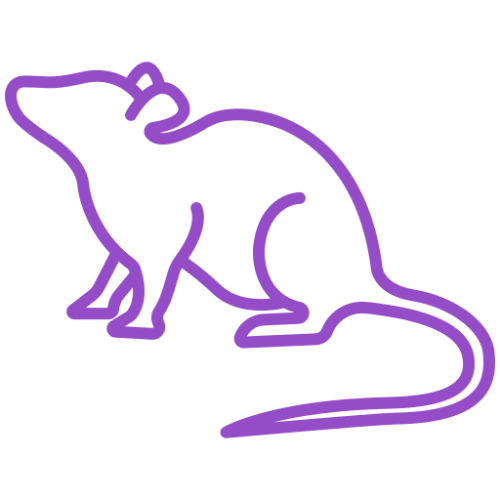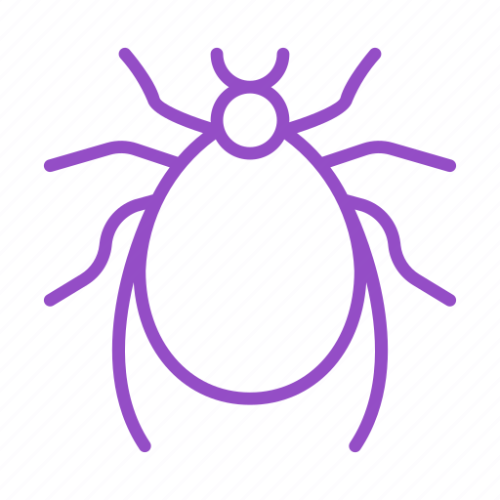Wasp Control and Exterminator Service
The Best Wasp Exterminator And Wasp Control Services Near Me!
Safeguard Your Space from Stinging Threats with SmartGreen Pest and Mosquito Control in Woodstock, GA! As your trusted local pest experts since 2014, we prioritize eco-friendly solutions and exceptional customer service. Count on us for reliable wasp control tailored to your needs. Our team employs environmentally conscious methods to eliminate wasp nests, ensuring a safe and pest-free environment for your home or business. Choose SmartGreen for effective, personalized wasp control that prioritizes your well-being. Experience the SmartGreen difference – contact us today for expert wasp control solutions and enjoy peace of mind in your space!
We Provide Wasp Control and The Following Services:
SmartGreen Pest and Mosquito Control is dedicated to exterminating and preventing pest infestations on your property. Our services eradicate the most common and even uncommon pest types. You can count on us for:
Trust SmartGreen Pest and Mosquito Control exterminators in Woodstock, Kennesaw, GA and surrounding areas to get rid of all types of insects around your property. Call (404) 937-7088 today to request eco friendly pest control at your home or office.
Understanding the Basics: Identification and Lifecycle of Wasps
Wasps are flying insects that belong to the order Hymenoptera and the suborder Apocrita. They are closely related to bees and ants, sharing similar characteristics such as a slender body, two pairs of wings, and a narrow waist. However, unlike bees, wasps are generally more aggressive and can pose a greater threat to humans.
Identification of Common Wasp Species
- Yellowjackets: These are the most common type of wasps encountered by humans. They are yellow and black in color, with a distinct pattern on their abdomen. Yellowjackets are social wasps that build large nests and can become aggressive when their colony is threatened.
- Paper Wasps: Paper wasps are named for their habit of constructing nests made of papery material. They have long, slender bodies and are usually brown or reddish in color. Paper wasps can be found both in urban and rural areas, often building their nests under eaves, in trees, or in other protected locations.
- Hornets: Hornets are larger than other wasp species and are known for their aggressive behavior. They have a black and white or black and yellow coloration and build large nests, often found high off the ground. Common species of hornets include the European hornet and the bald-faced hornet.
Wasp Lifecycle: From Egg to Adult
Understanding the lifecycle of wasps can help in identifying the best strategies for control. Wasps go through a complete metamorphosis, consisting of four distinct stages:
- Egg: The lifecycle begins when a queen wasp lays eggs. These eggs are usually laid in individual cells within the nest and are attached to a substrate.
- Larva: Once the eggs hatch, they give rise to larvae. During this stage, the larvae are fed by adult wasps and undergo rapid growth. Larvae are usually white or cream-colored and have no wings.
- Pupa: After reaching a certain size, the larvae spin a silk-like cocoon around themselves and enter the pupal stage. Inside the cocoon, the larvae undergo a transformation, developing into adult wasps.
- Adult: Once the transformation is complete, the adult wasps emerge from the cocoons. At this stage, they are fully developed and capable of reproduction. Adult wasps then take on various tasks within the colony, such as foraging for food, building the nest, or caring for the young.
It is important to note that the lifecycle of wasps can vary depending on the species and environmental conditions. Understanding these basic aspects of wasp identification and lifecycle will help you in implementing effective control measures tailored to the specific species you are dealing with.
Identifying Signs of a Wasp Infestation
Identifying signs of a wasp infestation is crucial in order to take prompt action and prevent the problem from escalating. By being aware of the following signs, you can quickly determine if your property is being invaded by these stinging insects.
Visual Identification of Wasps
- Sightings of Wasps: The presence of wasps flying around your property, particularly in large numbers, is a clear indication of a potential infestation. Pay attention to their appearance, size, and behavior to help identify the species.
- Wasp Nests: Wasps build nests to protect their colonies and rear their young. These nests can be found in various locations, such as tree branches, under eaves, within wall voids, or underground. Take note of the size, shape, and material used to construct the nest as it can provide valuable clues about the species of wasps present.
Physical Signs of Wasp Nests
- Visible Nest Structure: If you spot a visible wasp nest, it is an obvious sign of an infestation. Look for nests made of paper-like material, often resembling a honeycomb pattern, or nests constructed from mud or other materials, depending on the species.
- Nest Entrances: Wasps have distinct entrances to their nests, which they use to enter and exit. Look for small holes or openings in your property, such as crevices, gaps in walls, or underground burrows, which may indicate the presence of a hidden nest.
Identifying Wasp Activity
- Increased Wasp Presence: If you notice an increase in wasp activity around your property, such as frequent sightings or encounters, it may indicate a nearby nest. Wasps are attracted to food sources, so pay attention to areas where they gather, such as trash cans, outdoor dining areas, or flowering plants.
- Aggressive Behavior: Wasps can become aggressive when their nest or colony is threatened. If you notice wasps behaving defensively, exhibiting aggressive flying patterns, or stinging without provocation, it could be a sign that their nest is nearby.
It is important to exercise caution when investigating signs of a wasp infestation, as disturbing a nest can lead to stings and potential harm. If you suspect a wasp infestation based on the signs mentioned above, it is advisable to seek professional assistance to safely and effectively address the issue.
DIY Wasp Control: Home Remedies and Traps
When it comes to controlling wasp infestations, many homeowners prefer to tackle the problem themselves before seeking professional help. DIY wasp control methods can be effective in certain situations, particularly for small infestations or when the nests are easily accessible. Here are some home remedies and traps that you can use to manage a wasp problem on your own:
Natural and Homemade Wasp Repellents
- Peppermint Oil: Wasps are repelled by the strong scent of peppermint oil. Mix a few drops of peppermint oil with water in a spray bottle and apply it to areas where wasps are frequently seen, such as doorways, windows, or outdoor seating areas.
- Lemongrass Essential Oil: Similar to peppermint oil, lemongrass essential oil can be used as a natural wasp repellent. Dilute a few drops of lemongrass oil in water and spray it around your property to deter wasps from nesting or foraging.
- Cloves: Wasps dislike the scent of cloves. Create a homemade wasp repellent by placing whole cloves in a small mesh bag or sachet, and hang it near entrances, windows, or outdoor gathering areas.
Creating Effective Wasp Traps
- Bottle Trap: Cut off the top third of a plastic bottle and invert it into the remaining portion, creating a funnel shape. Fill the bottom of the bottle with a sweet liquid, such as sugar water or fruit juice, to attract the wasps. The wasps will enter the trap but will have difficulty finding their way out.
- Water and Soap Trap: Fill a shallow dish with a mixture of water and liquid dish soap. Wasps are attracted to the water but will become trapped and drown in the soapy solution.
- Meat or Fish Bait Trap: Wasps are also attracted to protein-based baits. Place a piece of raw meat or fish in a container and cover it with a perforated lid. The wasps will be lured to the bait and become trapped inside the container.
Safety Measures for DIY Wasp Control
- Protective Clothing: When attempting DIY wasp control, always wear protective clothing, including long sleeves, pants, gloves, and a beekeeper's veil or hat with a mesh face shield. This will minimize the risk of getting stung.
- Nighttime Approach: Wasps are generally less active at night. Consider addressing the nests or traps during the evening or early morning when the wasps are less likely to be aggressive.
- Careful Nest Removal: If you plan to remove a wasp nest, do so with caution. Use a long-handled tool to knock down the nest or place a plastic bag over it and securely seal it before disposal. Always follow safety guidelines to avoid disturbing the wasps and getting stung.
While DIY methods can be effective for small wasp problems, it's important to note that larger or more aggressive infestations may require professional assistance. If you are uncertain or uncomfortable dealing with a wasp infestation on your own, it is best to consult a pest control professional to ensure the safe and effective removal of the wasps.
Professional Wasp Control: When to Call the Experts
While DIY methods can be effective for small-scale wasp control, there are situations where it is best to call in professional pest control experts. Professional wasp control services have the knowledge, experience, and specialized equipment to handle more challenging infestations and ensure the safety of your property and family. Here are some scenarios in which it is advisable to seek professional help:
When is a Professional Needed?
- Large or Aggressive Infestations: If you are dealing with a large wasp nest or a highly aggressive species, it is best to leave the removal and control process to professionals. Trying to handle such infestations on your own can be dangerous and increase the risk of stings.
- Hard-to-Reach Nests: Wasps can build nests in difficult-to-access areas, such as inside wall voids, attics, or underground. Professional pest control technicians have the expertise and equipment to safely locate and eliminate these hidden nests.
- Structural Damage: If the presence of wasps has caused structural damage to your property, such as weakened walls or compromised insulation, it is important to involve professionals who can address both the infestation and the resulting damage.
Choosing a Reliable Pest Control Service
- Research and Reviews: Look for reputable pest control companies in your area. Read customer reviews and check their ratings with local business directories or online platforms. Seek recommendations from friends, family, or neighbors who have previously used their services.
- Certifications and Licenses: Ensure that the pest control service you choose is licensed and certified to perform wasp control. This ensures that they meet industry standards and have the necessary knowledge and training to handle the job effectively and safely.
- Safe and Environmentally Friendly Practices: Inquire about the pest control company's approach to wasp control. Choose a service that utilizes environmentally friendly methods and minimizes the use of harmful chemicals that may pose risks to humans, pets, or the environment.
Understanding the Professional Wasp Control Process
- Inspection: A professional technician will conduct a thorough inspection of your property to assess the extent of the infestation, identify the species of wasps, and locate the nests.
- Treatment Plan: Based on the inspection findings, the technician will develop a customized treatment plan to effectively eliminate the wasp infestation. This may involve a combination of techniques such as nest removal, insecticide application, or preventive measures.
- Safety Measures: Professional pest control technicians follow strict safety protocols to protect themselves, your property, and occupants. They use appropriate protective gear and ensure that the treatment methods are applied in a safe and controlled manner.
- Follow-up Visits: Depending on the severity of the infestation, the pest control service may schedule follow-up visits to monitor the situation and perform additional treatments if necessary.
By enlisting the help of professional pest control services, you can ensure a thorough and effective wasp control process, minimizing the risks associated with infestations and protecting your home and family.
Preventive Measures: Keeping Wasps Away
Prevention is key when it comes to keeping wasps away from your property. By implementing certain measures, you can significantly reduce the chances of a wasp infestation. Here are some preventive measures you can take:
Landscaping and Home Maintenance Tips
- Trim Vegetation: Regularly trim shrubs, trees, and other vegetation around your property. Wasps are attracted to flowering plants and trees, so keeping them well-maintained can help deter these insects.
- Seal Entry Points: Inspect your property for any gaps, cracks, or openings that could serve as entry points for wasps. Seal these openings with caulk or install weatherstripping to prevent their access.
- Secure Trash and Food Sources: Wasps are attracted to food sources, so ensure that trash cans have tight-fitting lids and are kept clean. Clean up food spills promptly, especially when dining outdoors.
- Cover Openings: Install mesh screens on doors, windows, and vents to prevent wasps from entering your home. Inspect your property for any gaps or holes, and patch them up to deny wasps access.
Natural and Commercial Wasp Deterrents
- Fake Nests: Wasps are territorial, and the presence of an existing nest can deter them from building a new one nearby. Hang up fake wasp nests, which can be purchased online or at garden centers, to discourage wasps from establishing colonies in your vicinity.
- Wasp-Repelling Plants: Certain plants have natural properties that repel wasps. Consider planting mint, eucalyptus, basil, marigolds, or citronella around your property to help deter these insects.
- Commercial Wasp Deterrents: There are various commercial wasp deterrent products available, such as sprays, traps, and repellent powders. Follow the instructions carefully when using these products to ensure their effectiveness and safety.
Behavioral Changes to Discourage Wasp Activity
- Avoid Fragrances and Bright Colors: Wasps are attracted to sweet fragrances and bright colors, as they resemble flowers. Avoid using strong perfumes or wearing brightly colored clothing when spending time outdoors, especially during wasp season.
- Cover Food and Drinks: When dining outdoors, cover food and drinks to prevent wasps from being attracted to them. Use mesh food covers or keep food inside sealed containers until ready to eat.
- Educate Children and Guests: Teach children and guests about the importance of staying calm and avoiding sudden movements around wasps. Encourage them to keep a safe distance from nests and to report any wasp sightings to adults.
By implementing these preventive measures, you can create an environment that is less attractive to wasps, reducing the likelihood of infestations and minimizing the risks associated with their presence. Remember to stay vigilant and address any signs of wasp activity promptly to prevent the situation from escalating.
Ready To Get Rid Of Wasps?
Bottom line- A reduced amount of less toxic materials in and around the home, combined with “IPM” strategies, results in less exposure for you, your loved ones and pets. In addition, we guarantee against all of the most common pests here in Georgia: ants, roaches, spiders, etc.
*SmartGreen offers additional services at discounted rates for pest control customers, these services include: Mosquito Control, Termite Control, Flea and Tick Control, Pantry Pests Programs and Yard Applications.*

